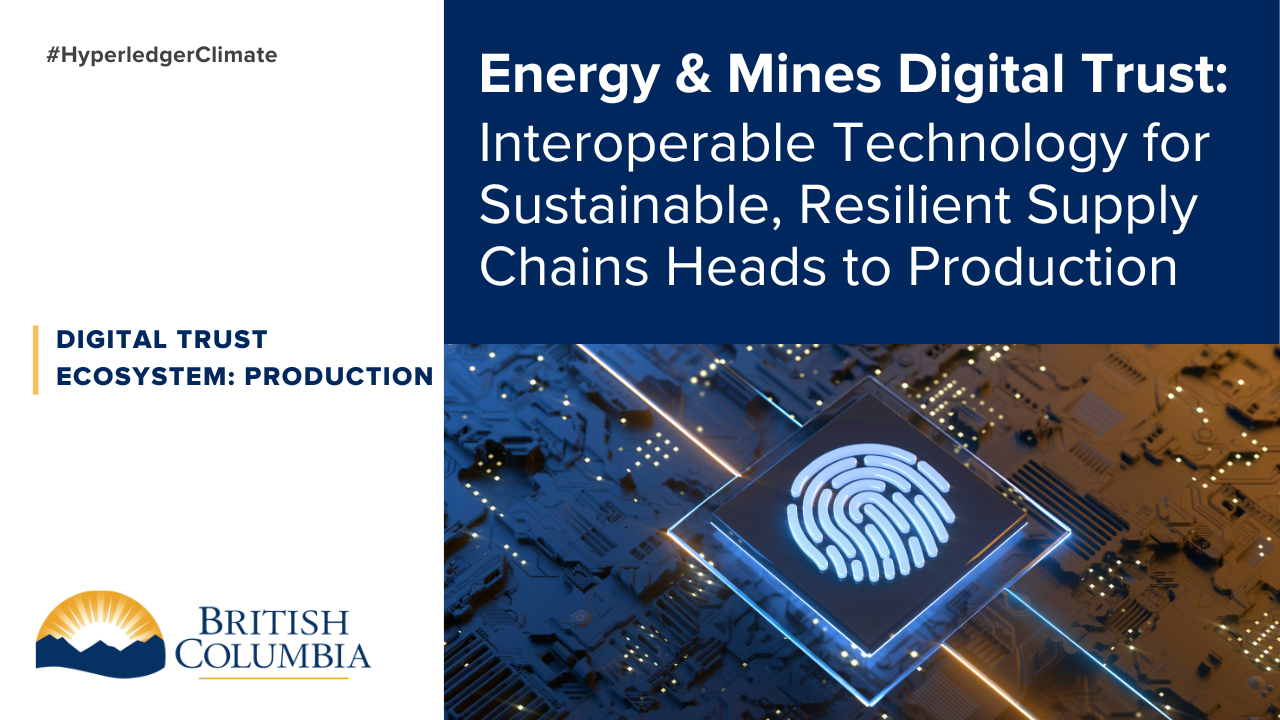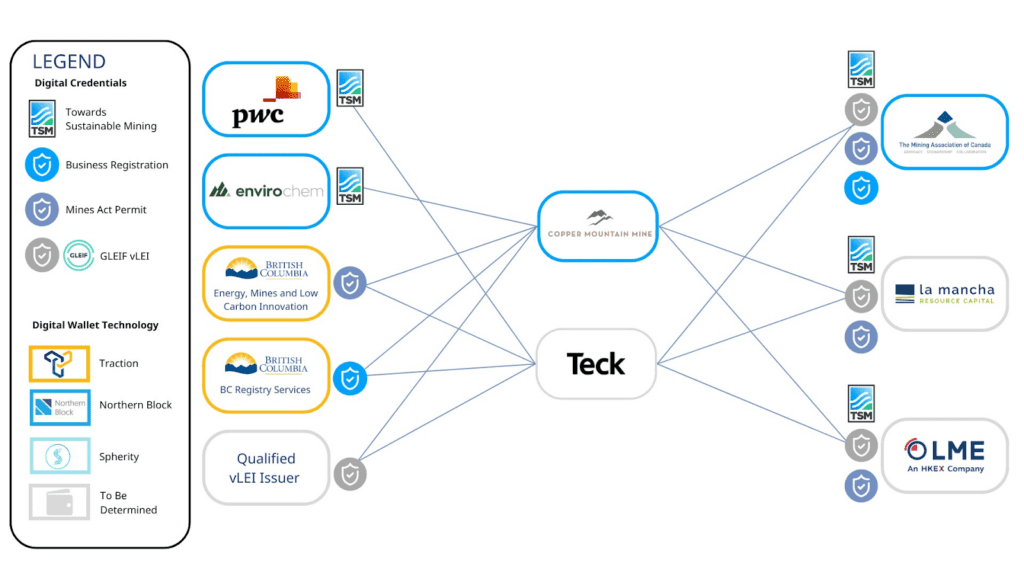Energy & Mines Digital Trust: Interoperable Tech for Supply Chains

Innovative technology that brings sustainability data from the physical world into a trusted digital environment is essential to global climate action. Energy & Mines Digital Trust provides digital trust solutions for the natural resource sector, empowering companies to prove their sustainability practices. Today, EMDT is moving from the research and development phase into production – making the process of sustainability reporting with digital credentials a reality for the mining sector.
EMDT was initiated by the Government of British Columbia, Canada, in partnership with TELUS to explore the use of digital trust technology for the natural resource sector. Throughout the project’s pilot phase, EMDT earned international recognition for the unique application of digital credentials for organizational identities using Hyperledger technologies.
CHALLENGES IN SUSTAINABILITY REPORTING
To compete in a global market that prioritizes sustainably sourced products, mining companies must be able to prove where their products originated and how they were produced.
The current process for proving sustainability claims is inefficient due to:
- Diverse regulatory models
- Varied reporting standards
- A lack of interoperable digital tools
EMDT’s pilot use cases demonstrate that digital credentials offer a solution to these challenges, driving a new approach to sustainability reporting, and empowering mining companies to share verified data that can be trusted.
Tamper-proof and verified in real time, a digital credential enables anyone viewing it to determine who the issuer is, that the credential is valid, and that it has not been revoked – regardless of where or to whom it is shared.
MOVING TO PRODUCTION
As EMDT’s mining sector use case moves into production, mining companies, regulators, and governing bodies will experience the benefits of digital trust technology first-hand.

Participating mining companies will be issued two digital credentials:
- Mines Act Permit – A credential issued by the Government of British Columbia that regulates all mining activity in the province. Using this credential, mining companies can confirm the legality of their operations to a multitude of recipients.
- Towards Sustainable Mining (TSM) report – A voluntary benchmarking standard governed by the Mining Association of Canada, a private-sector industry association, that recognizes environmental, social, and governance performance, enabling mining companies to differentiate themselves in global markets.
Currently, mining companies are forced to share data through insecure channels, such as email, and customize data to meet specific requests. Buyers, auditors, and regulators must take companies at their word that the data is accurate. These challenges have resulted in a lack of trust in reported data, especially in complex international supply chains.
Equipped with the Mines Act Permit and TSM report, a mining company, such as Copper Mountain Mining Corporation, can easily prove that they are operating legally, and their sustainability claims are backed by audited data. Since digital credentials can be shared with multiple audiences with just a few clicks, Copper Mountain can immediately share this information internationally, increasing efficiency, transparency, and trust as they participate in
COLLABORATIVE ACTION: INTEROPERABLE TECHNOLOGY
Interoperable technology is essential to EMDT’s expansion. During the pilot phase, EMDT developed a tool called Traction, based on Hyperledger Indy and Aries. Hyperledger Aries maximizes Traction’s interoperability with the technology solutions that exist globally. Traction will be utilized by the Government of British Columbia to send and receive digital credentials, including the Mines Act Permit.
EMDT has built a network of technology partners offering wallet solutions that enhance information exchange even further. Any wallets built on Hyperledger Aries can seamlessly exchange digital credentials. Technology providers such as Northern Block, whose enterprise wallet is also built using Hyperledger Aries, demonstrate how both private and public sector solutions integrate to maximize impact for end users. EMDT’s participants can leverage any interoperable tool of their choice, while maintaining security and efficiency in credential exchange.
GOING GLOBAL: SCALING TO INTERNATIONAL SUPPLY CHAINS
The Energy & Mines Digital Trust project will produce increasing value for participants as it grows in scale and scope. To facilitate this, EMDT is leading joint activities with the United Nations Centre for Trade Facilitation and Electronic Business (UN/CEFACT) through the Critical Minerals Traceability & Sustainability project.
Through this work, EMDT and UN/CEFACT will leverage the findings of EMDT’s use cases to showcase the value of digital trust technology. This collective action will build upon the UN/CEFACT’s capacity to develop and deliver digital standards and best practices for sustainable supply chains. A focus on interoperable open-source technology can help to overcome barriers to adoption and encourage global participation and collaboration in line with UN/CEFACT’s guidelines for successful traceability initiatives.
CONCLUSION
As EMDT’s ecosystem of participants grows, so do opportunities to digitize verifiable data from across various operations, streamline business processes, and collaborate towards climate action goals. EMDT demonstrates how digitalization has the potential to improve the international exchange of critical data while prioritizing privacy and data security for suppliers and operators. To learn more about this work and follow EMDT’s journey to production, visit our website.
